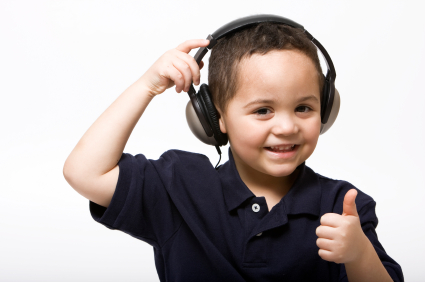Music appreciation enriches the primary classroom through discovery and sonic exploration. The simple act of music listening develops a child’s language development and ability to “decode” the abstract (Eisner, Legg). Students that actively engage in musical performance, whether in the classroom or in the concert hall, exhibit increased cognitive ability and self-expression. (Schellenberg). Besides the added benefits to language and intellectual development, adding music appreciation activities to your primary classroom is fun!
Exploring new musical cultures through music appreciation brings music to life in any primary classroom. Enjoy these fun innovative music appreciation activities below. Each music appreciation activity encourages active music listening and student participation.
Music Appreciation Activity 1: Painting to Music
In this interdisciplinary music appreciation activity, students discover classical music through visual art. For this activity, you will need classical recordings from different eras (ex. Impressionism, Classical Era, Baroque, avant-garde) and basic art supplies. I found that watercolors worked best. For extra resources, you can include paintings from each of the eras.
As the children listen to the recording, encourage them to paint what they hear or what the music makes them feel. Ask students to share what they painted. Post the paintings on a bulletin board separated into the different musical eras. After the students share their work, show them images of art from that time period. Some composers, like Debussy and Mussorgsky, were inspired by specific artworks. Discuss how these visual works inspired musical composition.
Music Appreciation Activity 2: Musical Movement
For this activity, include several different recordings from all musical styles and eras. For example, you may have Stravinsky’s Rite of Spring, some jazz tunes, music from a local indie artist, and salsa music. Bring out some scarfs, streamers, or other fun music movement props. As the music plays, encourage students to express themselves through dance.
Music Appreciation Activity 3: Popular Music Appreciation Books
For quieter times in the primary classroom, you can share stories about composers and music around the world. Kathleen Krull’s Lives of the Musicians: Good Times, Bad Times (and What the Neighbors Thought) is a fun book about classical composers with humorous illustrations by Kathryn Hewitt and Barrie Carson Turner’s Carnival of the Animals (Illustrated by Sue Williams) includes a great commentary on Saint-Saens.
Music Appreciation Activity 4: World Music Singalong
Your students can enjoy music from around the world with fun songs. Resources online like Mama Lisa’s World includes lyrics, MIDI playback, and rhymes from all over the world. Other great resources include Putamayo World Music and and Mama’ Goose: A Latino Nursery Treasure.
Music Appreciation Activity 5: Puppet Show Fun
If you do not have a class set of puppets, you can make fun brown paper bag puppets for this music appreciation activity. Select a few musical works that include a story. Tchaikovsky’s Nutcracker Suite is an excellent example. Explain the story behind the music to the class. The children take turns playing the parts in the music. For example, students can make their toy soldier puppets march in time to the music or have their flower puppets dance and twirl like ballerinas.
The puppet play can take place at their desks or you can create a center stage using a puppet stage or a table turned on its side. You might even use this idea for a fun school program!
How do you add music appreciation to your classroom?
If you teach music appreciation in your classroom or studio, then I’d love to hear from you!!
What are your best ideas and strategies for teaching music appreciation to your younger students? Hearing your real life stories can help benefit other teachers and provide a network where more relevant teaching ideas can be found more effectively on the internet- so please feel free to share your thoughts and ideas in the comments area below.
SOURCES:
Eisner, E. (2001). Music Education Six Months after the Turn of the Century. Arts Education Policy Review, 102(3), 20.
Legg, R. (2009). Using music to accelerate language learning: an experimental study. Research in Education, (82), 1-12. Retrieved from the Professional Development Collection database.
Schellenberg, E. (2005). Music and Cognitive Abilities. Current Directions in Psychological Science (Wiley-Blackwell). 317-320.



I have had a great amount of success having students
draw to Samuel Barber’s Adiago for Strings. This music has brought up many topics and memories for students. I love doing paper plate dances to the Nutcracker and it comes at a time when students are very active especially the Chinese and Russian Dance. Stars and stripes Together are wonderful for steady beat and I make up a little story as I go with a pleading section during the interludes. Students enjoy making up their own stories as well.
I loved reading these wonderful ideas on how to teach music to elementary students. Anymore information you can send me i would appreciate it. Thank you, Leticia Self
I had music appreciation in elementary school and I loved it. I remember some of the music which included Barcaroll, William Tell Overture, Wecome Sweet Springtime. I wish I could remember the rest, but that wâs about 65 years ago. Is it taught anywhere? Thanks